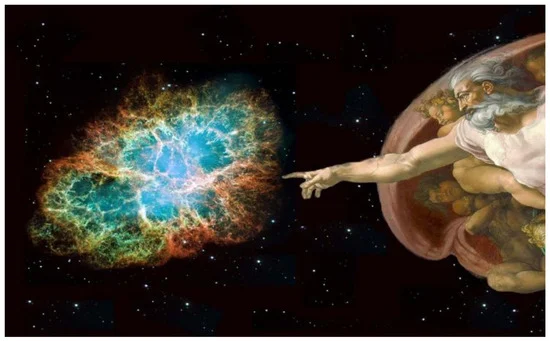If six galaxies discovered by NASA’s James Webb Space Telescope (JWST) are any indication, either the universe is much older than it has been described to be or galaxies form much quicker than what the current scientific wisdom says.
A paper detailing the JWST findings was published by Nature on February 22. In the three days since its publication the scientific community is agog with questions over what all this means.
In either case, the JWST discovery is threatening to potentially upend astrophysics unlike ever before. What has thrown off the scientific community is that the six galaxies came into existence between just about 500 million years and 700 million years after the Big Bang some 13.7 billion years ago. Typically, galaxies take billions of years to form but if the ones discovered by the JWST formed so quickly, there is a fundamental problem. The idea that the universe could have produced fully-formed galaxies in its own infancy is astounding.

Primordial galaxies of the kind discovered are about ten times bigger than the Milky Way which is confounding scientists. What this discovery can potentially do is force the scientific community to fundamentally rewrite the theory of the creation of the universe. One way to look at the discovery is that if the theory that galaxies take billions of years to form holds true, then the universe ought to have formed much earlier than its 13.7-billion-year-old age. If not that, then galaxies form much more rapidly than so far theorized. So far it appears as if only one of the two can be true.
However, a third explanation being offered is that the six galaxies are an optical illusion. They are, in fact, baby galaxies whose sizes seemed dramatically enlarged because of gravity as a magnifying glass. Gravity can bend space and time to create a magnifying lens. But then there are those scientists who think that the six are monster black holes.
Another finding that is causing a great deal of excitement is that the mass of stars within each of these objects totals to several billion times larger than that of our sun. At least one of the six contains mass that is 100 billion times the mass of our sun, making it much more massive than the Milky Way which contains stars whose mass total 60 billion times that of the sun.
It is, of course, still early days to throw out the old physics about the universe but the discovery is certainly compelling the scientific community to at least consider the possibility of revising the theory of creation almost entirely.
Whatever may turn out to be the case eventually, the $10-billion JWST has been a spectacular success in revealing structures and phenomena across the universe in such breathtaking resolution as never thought possible. (IndiCa News)
